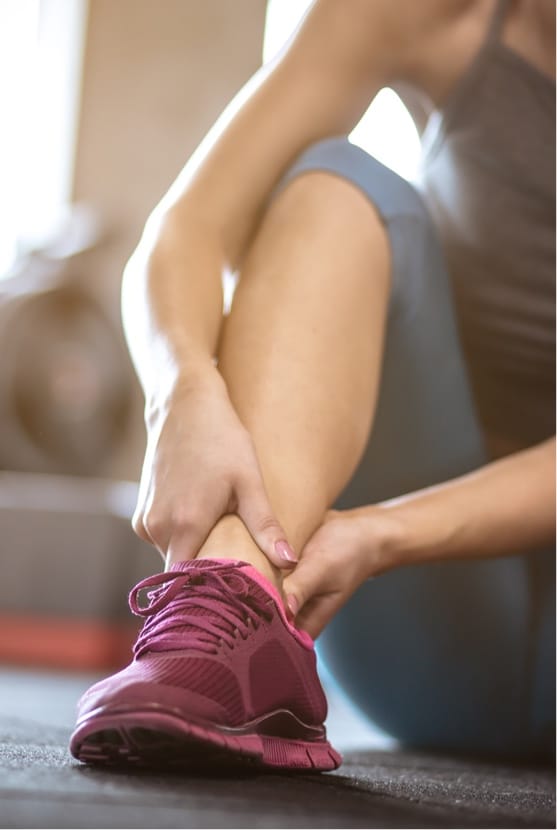Osteoarthritis is the gradual breaking down of the cartilage in a joint. Each foot and ankle has 28 bones and 33 joints, any one of which could be affected. Because osteoarthritis is caused by wear and overuse of a joint, athletes, and people of any age, can develop this painful condition.
What are the symptoms of osteoarthritis?
Osteoarthritis is a chronic disease that develops slowly over a long term. As most sports activities rely heavily upon the use of the feet, signs of the disease should be addressed as soon as they are noted.
- Pain in the joint during or after intense sports activity or even normal movement.
- Morning stiffness. Pain in the feet when getting out of bed or getting up to go to the bathroom.
- Stiffness after periods of inactivity, such as watching a movie or eating in a restaurant or going on a car trip.
- Joint sensitivity. Applying light pressure to the area produces discomfort or pain.
- Loss of range of motion. Is it hard or impossible to flex your foot through its normal range of motion? Does normal flexing cause pain?
- Joint feels like it is grating or grinding when in motion. It might also chronically pop or crackle.
How can osteoarthritis be treated?
While it can’t be cured or reversed, there is much that can be done to slow its progression, lessen pain, and restore functionality to the joint. Research is ongoing and vigorous and methods to invoke the body’s considerable ability to heal itself continues to be discovered. Some of these biologic approaches show great promise.

Autologous conditioned serum therapy injections have been found to reduce joint inflammation and pain in some patients and improve foot and ankle functionality. Branded as Regenokine, it has been used by top athletes such as Kobe Bryant and Alex Rodriguez. It is known to reduce site specific inflammation using the body’s own chemistry. Patients report relief from pain almost immediately and no side effects.
Corticosteroid injections can relieve pain and can be useful so that other practices such as movement and realignment therapies can be undertaken. This can relieve pain anywhere from six weeks to six months.
Lubrication injections such as hyaluronic acid can provide cushioning to the joint. This acid is biosimilar to a component in your natural joint fluid. Some patients find this more workable than other patients do and will often repeat the therapy when arthritic symptoms return.
Platelet-Rich Plasma. Many professional athletes report positive outcomes as a result of this therapy. A high density of platelets in injected into the target joint which attracts the body’s own stem cells to speed up healing and relieve pain.

